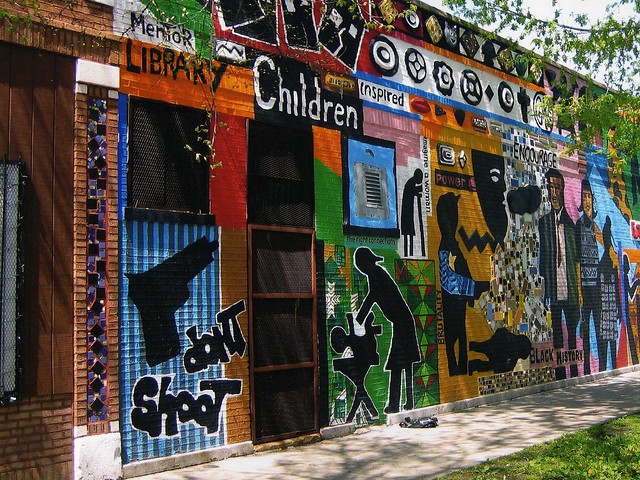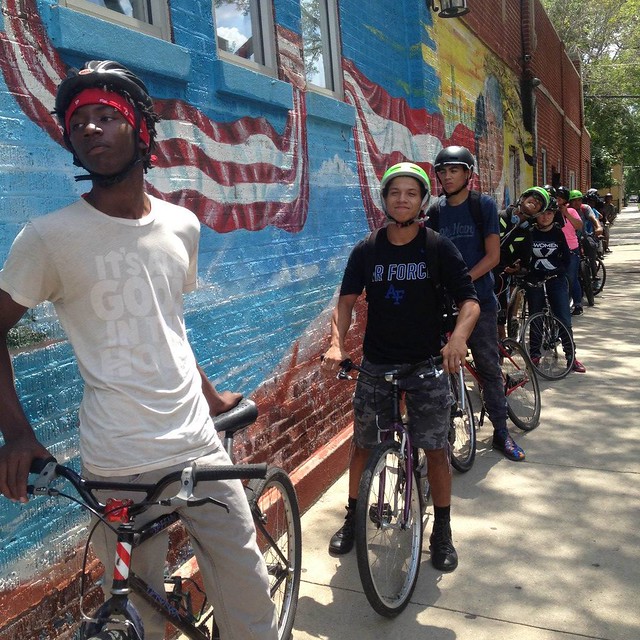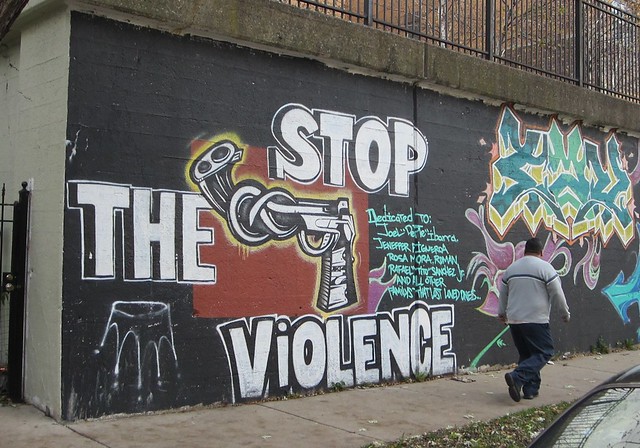
This article also ran in the Chicago Reader weekly newspaper.
In May 2012 the Chicago Department of Transportation released its “Chicago Forward” agenda, including the stated goal of eliminating all traffic deaths by 2022. That target was inspired by the international Vision Zero movement, which began in Sweden in 1997. It’s based on the notion that road fatalities and serious injuries aren’t simply unavoidable “accidents,” but rather outcomes that can be prevented through engineering, education, and enforcement.
In recent years the Vision Zero movement has spread to many major U.S. cities, most notably New York, where mayor Bill de Blasio has made it a hallmark of his administration. But it wasn’t until earlier this month that the Chicago announced a formal Vision Zero initiative, starting with a three-year interdepartmental action plan slated for release this fall. The deadline for reaching zero traffic deaths and serious injuries has been pushed back to 2026.
“Every day someone is injured or worse as the result of a car crash on Chicago’s streets—and that is simply unacceptable,” Mayor Rahm Emanuel said in a statement. “These crashes are preventable, and that is why we are stepping up our efforts.”
Local transportation advocates like the Active Transportation Alliance applauded the news. After all, the city of New York has reported that between 2014 and 2015 there was a reduction in all traffic fatalities by 22 percent, with a 27 percent drop in pedestrian deaths (although this summer pedestrian fatalities spiked in NYC).
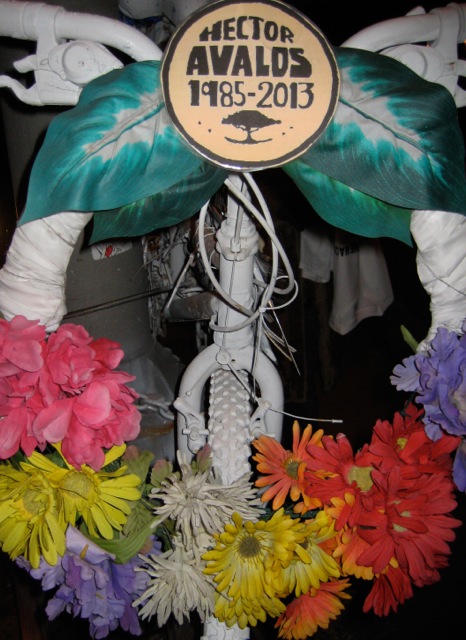
But it seems likely the devil will be in the details when it comes to ensuring Chicago’s safety program is a net positive for all residents, particularly those in low-to-moderate-income communities of color.
In these neighborhoods, increased traffic enforcement—especially ticketing for minor infractions a la the “broken windows theory” —may not necessarily be seen as a good thing. Significantly, several high-profile, police-involved deaths of African Americans across the country began with traffic enforcement stops.
Michael Brown was detained for walking in the street, Sandra Bland was arrested after failing to signal a lane change, and Philando Castile was pulled over partly due to a broken taillight. While behind the wheel, Castile had been stopped by police 46 times in 13 years, according to an NPR records analysis.
“One of the pillars of Vision Zero is increasing opportunities for police to apply their biases to street users, aka increased enforcement of traffic laws,” LA-based transportation consultant and anthropologist Adonia Lugo said last year in a widely shared blog post titled “Unsolicited Advice for Vision Zero.” “White people may look to police as allies in making streets safer; people of color may not.”
Lugo also argued that that Vision Zero is an overly top-down approach, rather than one driven by the community, and yet another example of U.S. transportation advocates, who usually look to cities like Amsterdam and Copenhagen for best practices, exhibiting “Eurocentric thinking.”
Transportation equity consultant Naomi Doerner echoed some of those concerns in a recent interview with Streetsblog USA. “If we’re going to be giving more investment to police enforcement, it has to be communities telling police how and where and what,” said the former head of the New Orleans advocacy group Bike Easy. “This particular Vision Zero analysis had not been done by the advocacy community. I think that a lot of that really does have to do with the fact that a lot of the organized bike and walk community are not comprised of people of color.”
And rolling out Vision Zero in Chicago will be complicated by the fact that our gun-violence epidemic is arguably a much more urgent issue than traffic deaths. New York had about 330 homicides and 230 traffic fatalities in 2015; Chicago, with less than a third of the population of New York, had 491 homicides last year but averaged only about 110 traffic fatalities per year between 2010 and 2014 (the latest year for which the Illinois Department of Transportation has released crash data).
There have already been more than 3,000 people shot in Chicago this year and over 500 homicides—more than New York and L.A. combined. As such, it’s likely that some residents may feel that channeling city resources into preventing traffic deaths rather than homicides is misguided.
CDOT spokesman Mike Claffey says the city’s Vision Zero efforts—including enforcement, but also safety infrastructure and educational outreach—will, in fact, be concentrated in the communities that are disproportionately impacted by severe crashes, largely low-to-moderate-income neighborhoods on the South and West sides.
“A preliminary analysis performed by the Chicago Department of Public Health revealed disparities in traffic fatalities by race and economic hardship,” Claffey says. “The study found Chicagoans facing high economic hardship suffer a traffic fatality rate nearly twice as high as those facing low economic hardship.”
But he also promises that the upcoming action plan will be informed by community input. “Vision Zero will not be a top-down program, but will feature extensive public engagement with the goal of working with high crash communities across the economic spectrum to develop the most effective strategies for reducing crashes in each community.”
Police spokesman Frank Giancamilli also says that our city’s Vision Zero initiative will be community-driven. “The plan builds upon the work officers are doing every day to improve traffic safety through sensible traffic enforcement,” he says. “We are committed to fostering strong partnerships with residents and other key stakeholders to ensure the safety of motorists and pedestrians."
“I haven’t heard much about Vision Zero-related racial profiling in New York,” says Veronica Vanterpool, director of the Tri-State Transportation Campaign, one of the groups advocating for the movement in that city. Rather most of the complaints have been about police disproportionately ticketing people on bikes, she says, but failing to enforce the most dangerous motorist behavior, such as speeding, red light running, and intoxicated and distracted driving.
Vanterpool adds that she believes New York’s use of traffic enforcement cameras helps reduce incidences of profiling. “It’s less biased to have cameras issuing the tickets as opposed to a police officer,” she says. “The cameras are not biased—they are reporting behavior.”
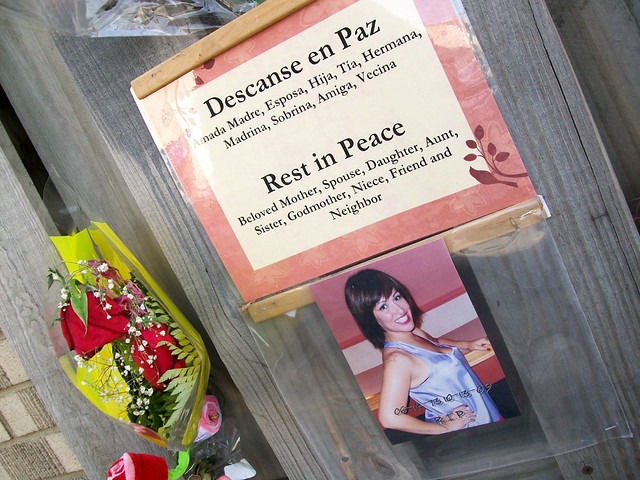
I asked Vanterpool if she had advice on how Chicago should approach Vision Zero in light of our homicide crisis. “The movement is about making streets safer so we’re using them more, which will help reduce crime,” she says. “It’s like Jane Jacobs always said, ‘Eyes on the street.’ This isn’t just a transportation issue, it’s a health, economic development, public safety, and environmental issue. The sooner you have all those players in place, the stronger your rollout will be.”
Accordingly, in addition to CDOT and the CPD, departments and agencies participating in Chicago’s Vision Zero plan include the CTA, Public Health, Business Affairs and Consumer Protection, Innovation and Technology, and other city departments.
Like Vanterpool, Kyle Whitehead from the Active Transportation Alliance argues that Vision Zero can compliment, rather than distract from, efforts to reduce homicides in communities that are disproportionately affected by homicides, as well as traffic violence. “This goal shouldn't take away from efforts to address other challenges these communities are facing, including gun violence,” he says. “It's another aspect of community health, and safer streets can lead to progress on many other issues.”
Jacky Grimshaw from Chicago’s Center for Neighborhood Technology endorses the Vision Zero goal but argues that the city needs to adopt a similar no-tolerance plan for gun violence. “The homicide problem is our number-one health issue at this time,” she says. “Vision Zero addresses preventable deaths [due to traffic issues], but we do not seem to have a strategy for preventable deaths due to homicide. We need one.”
Ronnie Matthew Harris, who leads the South Side transportation advocacy group Go Bronzeville, says it would be understandable if some Chicagoans become concerned about Vision Zero leading to overpolicing, given the many historic and recent examples of biased enforcement in our city. “But it behooves LMI communities of color to see Vision Zero as an opportunity to augment efforts to address the more pressing problem of gun violence in Chicago,” he says. "Vision Zero is a chance for these communities and the various city agencies involved to improve government transparency—leading to more communication and collaboration, and a collective impact towards creating a more flourishing city."
Romina Castillo, who works at the Coalition to Lower Obesity in Chicago Children and volunteers with the bike equity group Slow Roll Chicago, believes Chicago’s neighborhoods of color will welcome new safety infrastructure and open space, but agrees that community input will be crucial. “I am interested to see what Vision Zero proposes in regards to an overarching plan with equity being the driving force behind all decisions, based on an integrated participatory outreach process where the priorities of communities take precedent over engineering studies.”
Alex Wilson, who runs the Humboldt Park-based cycling education center West Town Bikes said last week that Chicago’s target of zero traffic fatalities by 2026 is “a fantastic goal.” But he added that the city will need to be sensitive to the fact that many people in communities like Humboldt view gun violence as a much more urgent problem than traffic safety. “Just last weekend,” he noted, “someone was killed in a gang-related shooting at Division and Maplewood [a block west of the center].”
While none of the thousands of at-risk young people Wilson has worked with at West Town in the last decade have been killed or seriously injured by motor vehicles while participating in West Town rides (he says three have gone to the emergency room), a student did lose his life to gun violence.
In 2009, youth apprentice Chris Lander, 21, was shot in front of his Humboldt Park home in what Wilson says was a case of mistaken identity. And just this summer a male student was grazed by a bullet intended for someone else when he visited a local park outside of WTB program hours, according to Wilson.
The vast majority of local youth who participate in West Town’s bike handling and mechanics classes are black and Latino, Wilson says. “Quite often they won’t be afraid to ride their bikes on a road with dangerous traffic, but they will avoid streets where they feel they may be in danger from gun violence. I’m really interested: Will Vision Zero just cover traffic fatalities or will it address the way transportation choices are affected by other safety concerns?”
Hopefully city officials won’t simply pay lip service to creating a culturally relevant Vision Zero initiative, but will prioritize recruiting people from diverse backgrounds to manage the program and provide input. Putting their money where their mouths are will show they believe that, when it comes to preventing traffic deaths as well as homicides, brown and black lives matter.
